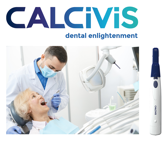Decommissioning dental decay – Justin Smith
Featured Products Promotional FeaturesPosted by: Dental Design 12th March 2019


If you take a moment to consider how dentistry has developed and progressed over time, you cannot help but to be astonished by its evolution. There is no doubt that the rudimentary tools and conditions endured prior to the establishment of the Dentists Act in 1878 bare very little resemblance to the sophistication of dentistry today. Yet as we reflect, it seems incredible that modern practitioners are still attempting to address the same dental issues as their ancestors.
Dental decay has been noted since records began, and it developed into a significant health problem when sucrose became a major component of the human diet.[1]It has blighted the lives of people for generations and although considerable progress has been made to curb its incidence, dental caries remains the world’s most widespread disease and affects almost half of the global population.[2]
In the UK, dental caries continues to be a serious health issue where sucrose-rich diets, especially in snacks and sugary drinks, puts children and young people in particular at risk of the condition. The statistics regarding childhood tooth decay are nothing short of staggering, and the long-term effects are evident too – the UK ranks as one of the highest in Europe for tooth loss in people aged over 65.[3]
As dental professionals know, dental caries is an infection caused by a mixture of microorganisms and food debris. Dental plaque is comprised of bacteria, which ferments food debris on the surfaces of the teeth and produces acids, which dissolve minerals from the hard tissues in a process called demineralisation.[4]In normal circumstances, a natural recovery process or remineralisation takes place and the buffering effects of saliva dilute and neutralise acids and transport minerals back to the partially demineralised enamel.[5]This process normally takes around 30-60 minutes. However, if the teeth are unable to recover, for example if the teeth are constantly under attack from fermentable carbohydrates, sugar and acids, if there is a lack of saliva or if bacterial plaque is not disrupted and removed regularly, the surface of the teeth can be subjected to prolonged demineralisation, which can lead to a carious legion that may well develop into a cavity.[6]
Following decades of intense research, some positive progress has been made in the fight against tooth decay. Public campaigns, widespread water fluoridation and patient education have helped to raise awareness and curb the incidence of dental caries. In addition, dental professionals continue to promote good oral health with instruction and dietary advice and when demineralisation is detected early enough, they are able to offer remineralisation therapy to slow the progression or even reverse the destruction of tooth enamel. Fundamentally however, the early signs of tooth decay can be extremely difficult to identify. Certainly, there are numerous visual/tactile evaluations that can be made at the cavitational stage, but earlydemineralisation is not always accurately detected with radiographs,[7]and this conundrum has presented a considerable challenge for dental professionals that are striving to uphold the modern principles of preventive, minimally invasive dentistry, until now.
Recently, the CALCIVIS® system has presented a significant breakthrough in the management of tooth decay by visualising demineralisation. The CALCIVIS system is the first biotech dental product in the world and uses a specific photoprotein that produces light in the presence of free calcium ions as they are released from actively demineralising tooth surfaces. A sensor within the device then detects the light and a visual map of the affected areas or ‘hot spots’ is displayed at the chair side. This early detection device provides dental practitioners with visual evidence of active demineralisation on tooth surfaces in time to initiate reparative and/or protective therapy and before early carious lesions have a chance to progress to the cavitational stage. Furthermore, the CALCIVIS system serves as a valuable communication tool within the treatment room by providing patients with greater understanding of demineralisation and the development of caries as well as the preventive strategies recommended by dental practitioners.
It may seem as if dental professionals are striving to deal with similar issues as their ancient counterparts, yet with the ability to identify caries at its earliest stage, there is the possibility that advanced dental decay requiring extraction may soon be scarce. Similarly, as further advances in science and dental technology emerge, it is likely that dental professionals will be able to spend less time performing invasive treatments and a lot more time influencing real change to the long-term oral health of the nation.
For more information visit www.calcivis.com, call on 0131 658 5152 or email at info@calcivis.com
References
[1]Loesche W.J. et al. Medical Microbiology. 4thedition. Chapter 99. Microbiology of Dental Decay and Periodontal Disease. https://www.ncbi.nlm.nih.gov/books/NBK8259/[Accessed 12thNovember 2018]
[2]World Health Organisation (WHO). WHO Technical Information note: Sugars and dental caries. October 2017. http://apps.who.int/iris/bitstream/handle/10665/259413/WHO-NMH-NHD-17.12-eng.pdf;jsessionid=71CF650EE5EAADFEA64EA828D4678DF3?sequence=1[Accessed 12thNovember 2018]
[3]World Health Organisation (WHO). The World Oral Health Report 2003. http://www.who.int/oral_health/media/en/orh_report03_en.pdf[Accessed 12th November 2018]
[4]ForsstenS.D. et al. Streptococcus mutans, Caries and Simulation Models. Nutrients. 2010 Mar; 2(3): 290–298. https://www.ncbi.nlm.nih.gov/pmc/articles/PMC3257652/[Accessed 12thNovember 2018]
[5]Neel EA et al. Demineralization–remineralization dynamics in teeth and bone.
Int J Nanomedicine. 2016.19 (11) 4743-4763.https://www.ncbi.nlm.nih.gov/pmc/articles/PMC5034904/[Accessed 12thNovember 2018]
[6]Margeas R. Remineralisation with a unique delivery system. Inside Dentistry. 2006. 2(4). https://www.dentalaegis.com/id/2006/05/remineralization-with-a-unique-delivery-system[Accessed 12th November 2018]
[7]ÖnemE. et al. Diagnostic accuracy of proximal enamel subsurface demineralization and its relationship with calcium loss and lesion depth. Dentomaxillofac Radiol. 2012 May; 41(4): 285–293. https://www.ncbi.nlm.nih.gov/pmc/articles/PMC3729001/[Accessed 12th November 2018]










